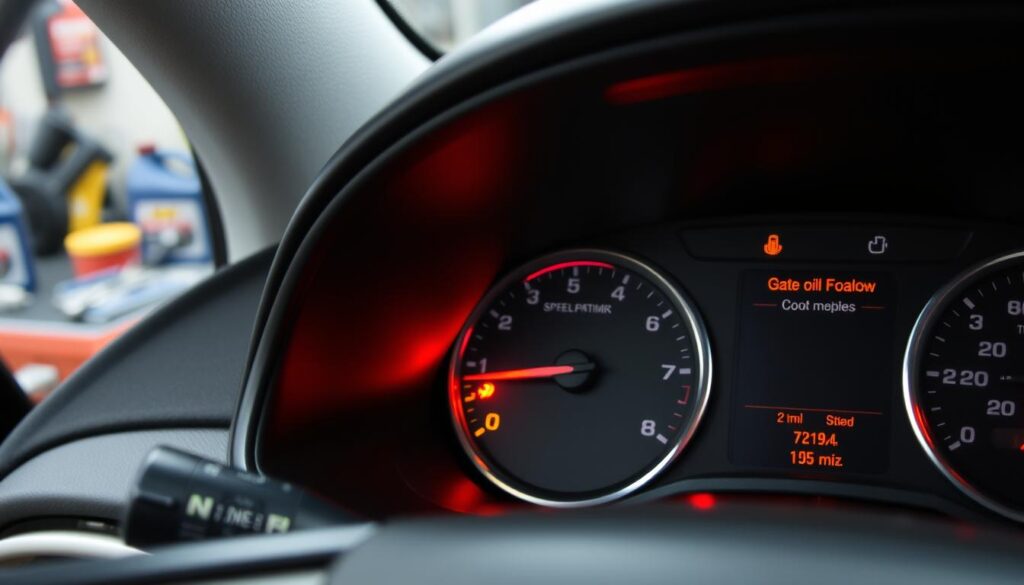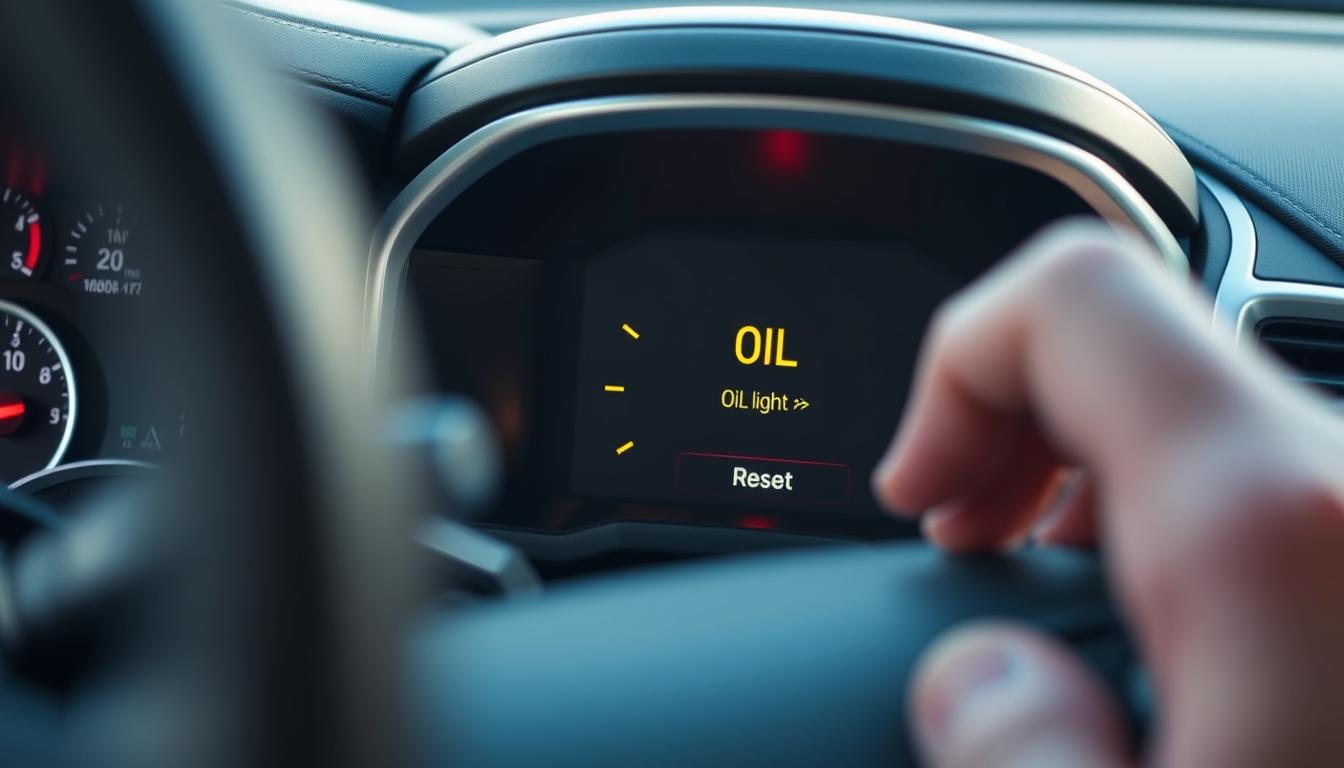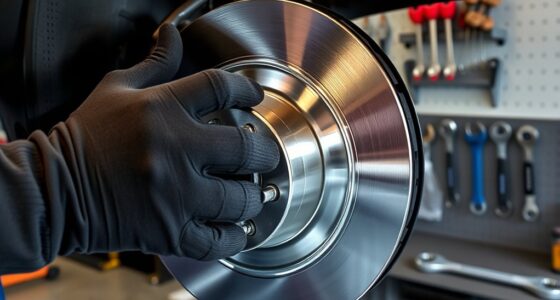Stepping into your Chevy Equinox, you feel a blend of trust and excitement. But, the oil light soon reminds you to maintain your car. Its flickering isn’t just a warning. It tells you to keep your car in top shape. By learning to reset the oil light, you boost your confidence. You also make sure your car stays healthy. Having this skill means small steps can make a big difference for your car and your comfort.
Key Takeaways
- Understanding the oil light is crucial for vehicle maintenance.
- Resetting the oil light is a simple yet important task.
- Regular maintenance can prevent bigger issues down the road.
- Knowing the signs for an oil change can save you time and money.
- Utilizing your oil light reset guide enhances your vehicle care knowledge.
Understanding the Chevy Equinox Oil Light
The Chevy Equinox oil light alerts you to potential oil system issues. Recognizing what the Chevy Equinox oil light means enhances your driving and car care. It usually signals low oil, dirty oil, or a needed oil change. Being aware allows you to keep your engine running well.
What the Oil Light Indicates
The oil warning light tells you about your engine oil’s condition. It turns on for:
- Low oil levels
- Oil quality degradation
- Oil pressure problems
Reacting quickly to these warnings helps prevent engine damage. Checking your oil level regularly is key to avoiding future issues.
Importance of Resetting the Oil Light
Knowing why to reset the oil light after changing oil is crucial. Resetting this light allows you to monitor oil life accurately. It helps you know when it’s time for another oil change. Not resetting can cause confusion, leading to delayed oil changes or using bad oil. This neglect can damage your engine, causing expensive repairs or reduced performance.
How to Reset the Chevy Equinox Oil Light
Resetting your Chevy Equinox’s oil light is crucial for keeping your car running smoothly. Here are easy steps to reset the oil light quickly. This helps ensure your vehicle stays in excellent condition.
Step-by-Step Instructions
- Turn the ignition to the “Run” position without starting the engine.
- Press the MENU button until the vehicle information menu appears, then scroll to “Remaining Oil Life.”
- Press SET/CLR to select.
- Use the up or down arrow to choose “YES” to reset.
- Confirm your selection by pressing the SET/CLR button.
- Your reset is now complete.
Common Variations in the Process
There may be slight variations in resetting the oil light, depending on your Chevy Equinox model year. For some models, you might need to press the gas pedal three times quickly. Others may have a dashboard button labeled with an “i” or a road symbol. Always check the Owner’s Manual for your specific model’s instructions.

Tools You Might Need
Knowing the right tools can simplify resetting your Chevy Equinox’s oil light. You often only need basic tools for this. But, understanding your car’s controls and having a manual helps a lot.
Basic Tools for Resetting the Oil Light
There are a few key tools you should have ready:
- Owner’s Manual – It has important info just for your car.
- Diagnostic Scanner Tool – It helps find other possible car problems.
- General Hand Tools – Like screwdrivers and pliers, for easy fixes.
Optional Tools for Better Maintenance
To take even better care of your Chevy Equinox, consider these tools:
- Oil Filter Wrench – It makes changing the oil filter simpler.
- Oil Change Kit – It has everything you need for an oil change.
- Vehicle Diagnostic Equipment – It helps keep an eye on engine health for more security with upkeep.

When to Reset Your Oil Light
Knowing when to reset your oil light is key for your Chevy Equinox’s care. It links to when you change your oil. Keeping up with oil changes helps your engine run well and last longer.
Recommended Maintenance Schedule
Experts often suggest changing oil every 3,000 to 7,500 miles. Your driving habits and oil type can change this. Sticking to this schedule helps your engine stay healthy. After changing oil, always reset the oil light to keep track of your oil’s condition.
Signs That Indicate an Oil Change is Due
It’s important to know when your engine needs a new oil change. Here are some common signs:
- Illuminated oil light on the dashboard
- Unusual engine noises, like knocking or rattling
- A noticeable drop in how well your engine works
Spot these signs? It’s time to change your oil and reset the oil light. This keeps your Chevy in good shape.

Tips for Maintaining Your Chevy Equinox
To keep your Chevy Equinox in top shape, focus on essential upkeep. Make sure to change the oil regularly and keep track of all maintenance. Doing so will greatly extend your vehicle’s life.
Regular Oil Change Practices
Changing the oil in your Chevy Equinox is key. Use the oil type and change it as the manufacturer suggests. This keeps your engine running smoothly. Regular oil changes also boost your car’s performance and gas mileage. Here are some tips:
- Change the oil every 5,000 to 7,500 miles, or as recommended by your owner’s manual.
- Choose high-quality motor oil that meets industry standards.
- Replace the oil filter with every oil change to ensure optimal filtration.
Keeping Track of Maintenance Records
Keeping good records of your vehicle’s maintenance is smart. It helps you stay on top of your Chevy Equinox’s service needs. You can also use it as a reference for routine upkeep or repairs. Make sure to note:
| Date | Service Type | Mileage | Service Provider |
|---|---|---|---|
| 01/15/2023 | Oil Change | 25,000 | Chevy Dealer |
| 07/20/2023 | Tire Rotation | 30,000 | Local Mechanic |
| 12/10/2023 | Brake Inspection | 35,000 | Chevy Dealer |
By sticking to these maintenance tips, you ensure your Chevy Equinox stays reliable. It will reward you with many years of service.

Conclusion
Learning how to reset the oil light on your Chevy Equinox is key. It’s a big part of keeping up with your car’s health. Doing this helps keep the dashboard indicators right. It also makes your car run better.
Following simple car care tips can improve how your car drives. Things like checking the oil and changing it on time matter. They help your Chevy Equinox face any problem, from gear issues to electrical problems.
Adding the oil light reset to your car care routine is smart. It’s a step towards taking great care of your Chevy Equinox. This helps your car last longer and keeps you safe on the road.









